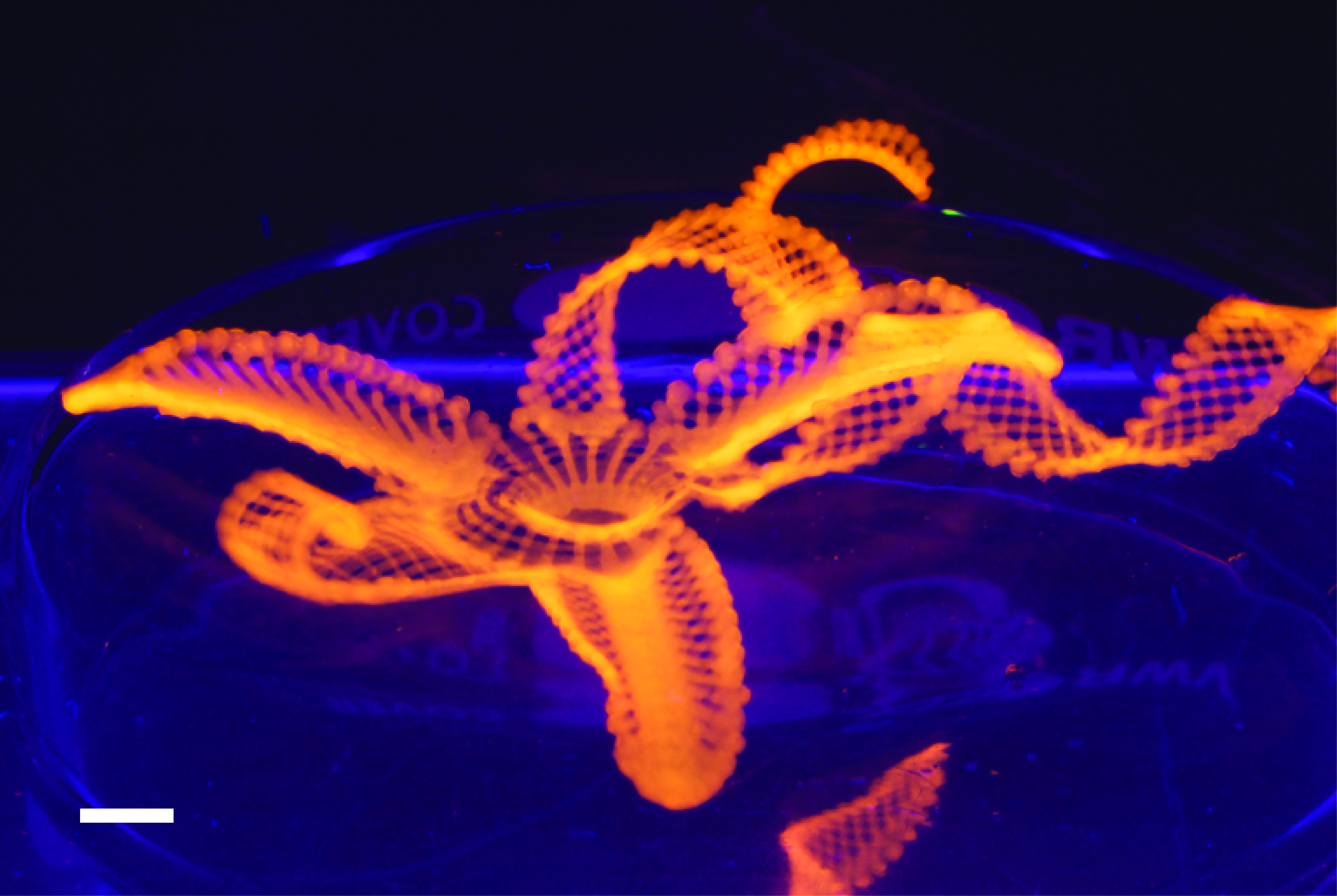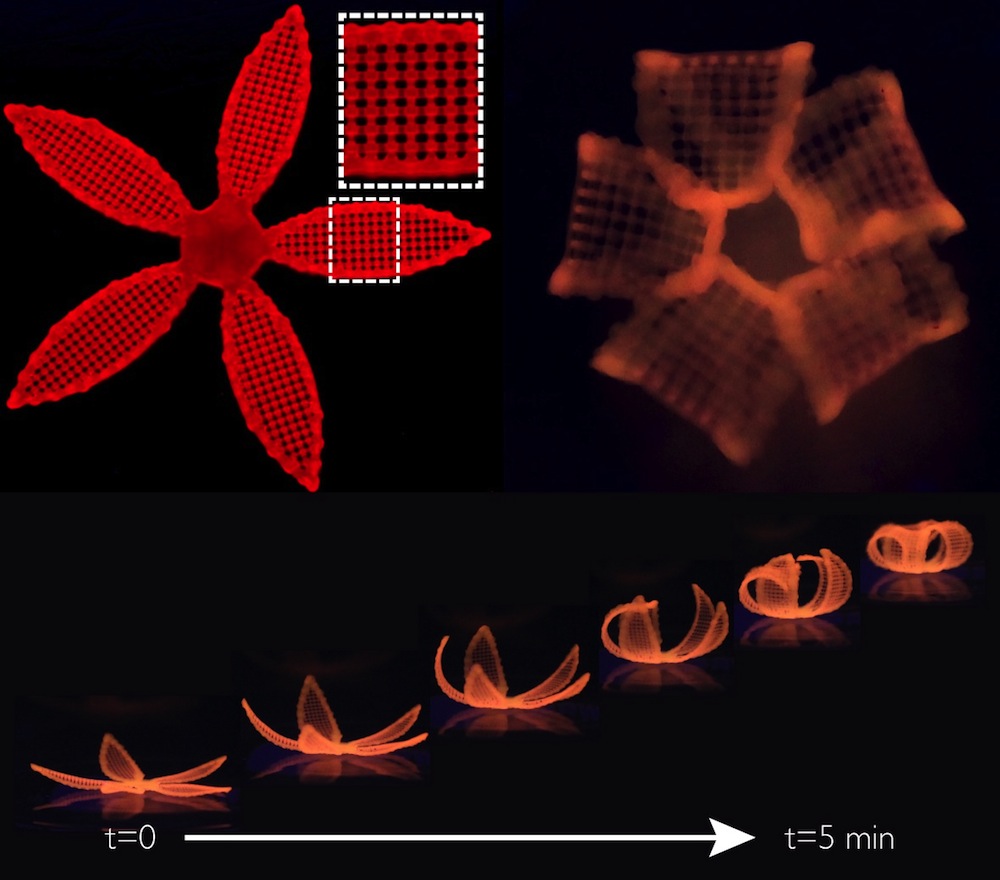'4D-Printed' Objects Change Shape After They're Made

By mimicking the way orchids, calla lilies and other plants bend and twist, scientists have created shape-shifting "4D-printed" structures that they say could one day help heal wounds and be used in robotic surgical tools.
Nowadays, 3D printing allows items to be created from a wide variety of materials — plastic, ceramic, glass, metal and even stranger ingredients such as chocolate and living cells. The machines work by depositing layers of material, just as ordinary printers lay down ink — except 3D printers can also print flat layers on top of each other to build 3D objects.
Now, scientists say they recently developed innovative 4D-printing methods that involve 3D-printing items that are designed to change shape after they are printed. [See video of how these shape-shifting, "4D-printed" structures work]
"Other active research teams exploring 4D printing require multiple materials printed together, with one material that stays rigid while another changes shape and acts like a hinge," said study co-senior author Jennifer Lewis, a materials scientist at Harvard University.
The researchers wanted to create 4D-printed structures that were created more simply, from one kind of material instead of several. They sought inspiration from nature, looking at plants, whose tendrils, leaves and flowers can respond to environmental factors such as light and touch. For instance, "pinecones can open and close depending on their degree of hydration — how wet they are," Lewis told Live Science.
Similarly, "tendrils coil up as part of their structure becomes woody and shrinks, leading to stresses that cause the wiry structure to bend and twist," study co-senior author L. Mahadevan, an applied mathematician and physicist at Harvard University, told Live Science.
Plant structures largely consist of fibers of a material known as cellulose. Lewis and her colleagues devised 3D-printed structures made of stiff cellulose fibers embedded in a soft hydrogel, the same kind of material from which soft contact lenses are made. This hydrogel swells up when immersed in water.
Sign up for the Live Science daily newsletter now
Get the world’s most fascinating discoveries delivered straight to your inbox.
The researchers can control the directions in which these fibers are oriented within the printed structures. In turn, the orientations of these fibers control the way in which these structures swell when they are immersed in water, much like how cellulose fibers control the way plants flex because of pressure exerted by fluids inside them, the researchers said. In essence, the scientists can use the orientation of cellulose fibers in the structures to program how the objects change shape.
The scientists found that they could make the structures they created shift into cone, saddle, ruffle and spiral shapes minutes after they were soaked in water. They had flat sheets bend and twist into complex 3D structures resembling orchids and calla lilies.

"I was most surprised by the complex shape changes we could encode in the printed architectures, given that we printed a single material in a one-step process," Lewis said.
The researchers noted that they can make their 4D-printed structures behave in more complex ways by using hydrogels that react to other factors — such as light, heat and acidity — and replacing the cellulose fibers with other rigid rods, such as electrically conductive bars.
In the future, plant-inspired 4D-printed structures could be seeded with living cells to help heal wounds, or find use in "soft micro-grippers for robotic surgical tools," Lewis said. "Another application of interest is smart textiles, which change shape or permeability in response to humidity, temperature and so on. We are pursuing some of these applications in my lab now."
Lewis, Mahadevan and their colleagues, materials engineer Sydney Gladman and physicist Elisabetta Matsumoto, both at Harvard University, and chemist Ralph Nuzzo at the University of Illinois Urbana-Champaign, detailed their findings online today (Jan. 25) in the journal Nature Materials.
Follow Live Science @livescience, Facebook & Google+. Original article on Live Science.











